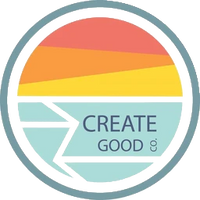Why Recycling Isn't Enough.

I think we can all agree that we’re guilty of doing the bare minimum sometimes. But we’re at least doing something, right? Unfortunately, the bare minimum is not going to get us very far. For a lot of people, my former self included, recycling was that “bare minimum.” I’d find myself lowering my standards or passing up on greener alternatives for things I’d buy because I swore I’d recycle it. Sound familiar?
While recycling is great, it’s not the answer to most of our problems. In fact, a shocking 91% of plastic produced isn’t recycled and only one third of households in the US actively recycle. And the plastic that does end up in the recycling bin, may not even be recycled. China, who imported recycled materials from numerous countries for handling since the late 80s, banned the import of most types of plastics into their country in early 2018. Chinese manufacturing industries would use imported waste as a source of energy or new product, but it quickly got out of hand. China could no longer handle the amount of waste coming into their country and it was becoming too hazardous to allow this process to continue resulting in the ban.
So what happens to the waste now? Much of it ends up in landfills, but a good amount ends up in our environments as well. A large amount of litter and debris finds its way into our oceans where it creates a lot of risk to living organisms there. The Great Pacific Garbage Patch is a collection of debris and from all over the world, whether it’s dumped from ships or made its way from an inland stream. The Great Pacific Garbage Patch is comprised of two areas: one spans from the North American West Coast to Japan, and the other spans from Hawaii to California. Plastics and other waste materials collect in these areas due to ocean currents and patterns. The materials eventually become so miniscule, it is nearly impossible to clean up or track where it ends up. From there, the plastics break down and make their way back to us, the initial consumer of plastic products, to be quite literally consumed in the seafood we eat. While scientists and engineers are working towards solutions to clean up these garbage patches, it’s likely best we find plastic alternatives to avoid adding to the problem.
“So if our bare minimum is not enough, what do we do?” The answer is simple- try harder and be resourceful. Use unconventional avenues to acquire the things you need and make it fun! Get some friends together and bring your unwanted and unused items together for a clothing swap night or a crazy craft night and see who can use the most dissimilar items to make something useful. The options are limitless, and there are no dead ends in steps towards sustainability. For the things you must buy- thrift, support brands that have green processes or that support environmental organizations, invest in quality items so you have less throw-away goods, and things that can be reused and then be reused again. Give yourself reality checks often and avoid excuses. Be sure to vote with your dollar and your voice for better environmental policies and actions. Doing your best and encouraging others to do their best is a huge success! And when in doubt, follow the hierarchy of shopping needs shown below.

Thanks for reading! Got an article idea? Share it with us in the comment below or email directly of CreateGoodLLC@gmail.com



